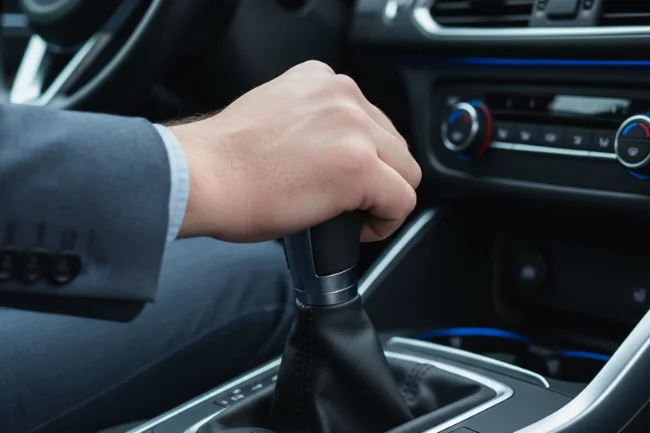
The idea of switching 2nd can sound simple at first glance, but its application and significance stretch far beyond its basic meaning. From driving to business decisions, sports strategies, and even personal development, the concept of transitioning into a secondary mode, position, or strategy after an initial attempt is essential. It’s not just about knowing when to make a move; it’s about understanding the right moment and the right approach to adapt to changing circumstances.
This article delves into the importance of switching 2nd across various fields, breaking down how it works, why it matters, and how to master this valuable skill to enhance efficiency and outcomes.
What Does “Switching 2nd” Mean?
At its core, switching 2nd refers to the process of moving into a secondary phase or strategy after the first attempt, whether it’s in a mechanical, strategic, or decision-making context. In simpler terms, it’s like shifting gears in a car, adapting to a backup plan in business, or switching roles during a sports game. The ability to switch 2nd effectively ensures smoother transitions, better control, and the resilience to thrive in various situations.
The concept is widely applicable, with each field interpreting it slightly differently but still benefiting from the core principle of adaptability and change.
Applications of Switching 2nd

Switching 2nd in Driving
One of the most straightforward applications of switching 2nd is in driving. In vehicles, the transition from first to second gear is crucial for smooth speed control and engine efficiency. Starting in first gear helps get the car moving, but staying in that gear for too long can cause strain on the engine and reduce the car’s efficiency. By switching to second gear at the right time, the driver ensures a smoother drive, protects the engine, and maintains momentum.
In this case, the “switching 2nd” action is all about timing. Shifting gears too early or too late can impact the car’s performance. Similarly, knowing when to “switch” to the next step in life, whether in driving or decision-making, ensures better results.
Switching 2nd in Sports
In sports, switching 2nd often means adapting a strategy or switching positions to optimize performance. Athletes and teams prepare with multiple game plans to deal with unexpected situations. The best teams know how to adjust quickly when things aren’t going as planned.
For example:
-
In basketball, a point guard might switch to a defensive role, covering a different player when the game requires it.
-
In football, a coach may call for a secondary play, switching from a passing strategy to a running strategy if the initial plan isn’t working.
-
Tennis players often switch to a second serve after the first one goes awry, ensuring they have a backup plan to avoid double faults.
The ability to switch 2nd in these cases demonstrates how flexibility and adaptability can give athletes a competitive edge.
Switching 2nd in Business
In business, switching 2nd is akin to pivoting your strategy when the initial approach fails. Whether you are running a startup or managing a well-established business, sticking rigidly to one plan can often lead to stagnation or failure. Switching 2nd in business means recognizing when your first plan isn’t yielding results and adapting to a new approach.
For instance, if a business’s original marketing strategy fails to attract the desired customer base, they might switch 2nd by implementing new strategies like influencer partnerships or targeted social media campaigns. This ability to switch ensures that businesses remain resilient and competitive.
Switching 2nd in Technology
Technology systems also depend on the principle of switching 2nd to ensure reliability and efficiency. Backup systems, fail-safes, and secondary modes all play vital roles in maintaining operational stability in digital and mechanical systems.
For example:
-
When a primary server fails, many systems automatically switch 2nd to backup servers.
-
In smartphones, when Wi-Fi signals drop, the device automatically switches to mobile data.
-
Similarly, electrical grids switch to alternate lines if a primary line experiences a failure.
These technological processes highlight the importance of having a secondary plan in place to maintain smooth operations, much like having a backup plan in business or life.
Switching 2nd in Personal Development
Switching 2nd is also critical in personal development. Life doesn’t always go as planned, and being able to adapt and move to a secondary course of action can be the difference between stagnation and growth. Whether you’re dealing with setbacks, pursuing new goals, or adapting to changing circumstances, knowing when to “switch” is a key factor in achieving personal success.
For example, if you’re working on a career goal but face obstacles, you might need to switch to a secondary strategy, such as taking a new course or networking differently, to continue progressing toward your goal.
The Importance of Switching 2nd

Adaptability
Adaptability is one of the primary benefits of switching 2nd. In a fast-changing world, being able to adjust to new circumstances is crucial. Whether you’re behind the wheel, on the field, or in the boardroom, those who can switch 2nd are more likely to succeed because they are prepared for change and flexible enough to embrace it.
Timing
Timing plays a significant role in switching 2nd. Knowing when to make the switch, whether it’s in a game, during a business meeting, or while driving, can determine the outcome. Shifting too early or too late can cause problems, which is why awareness of timing is essential.
Resilience
Switching 2nd also fosters resilience. Life is full of unexpected challenges, and the ability to quickly move from one strategy or plan to another shows emotional strength and the ability to persevere. Those who master this skill tend to bounce back from setbacks more easily, learning from their experiences and using them to grow.
Potential Mistakes in Switching 2nd
While the concept of switching 2nd offers numerous benefits, it’s important to avoid common mistakes:
-
Switching too early: In driving, switching gears too early can stall the car. In business or sports, jumping to a backup plan before giving the first plan enough time to work can waste resources.
-
Switching too late: On the other hand, delaying the switch until it’s too late can result in missed opportunities or failure to address underlying issues in time.
Successful switching 2nd requires a balance of timing, awareness, and analysis.
How to Master Switching 2nd
Mastering switching 2nd involves practice, observation, and a willingness to learn from mistakes. Some tips to improve your ability to switch include:
-
Pay attention to timing: Recognize the signs when the first plan isn’t working and be ready to make the switch at the right moment.
-
Stay flexible: Don’t be too rigid with your plans. Keep an open mind and be prepared to pivot when necessary.
-
Learn from past experiences: Reflect on previous transitions to understand what worked and what didn’t, and use those lessons for future decisions.
Table: Real-World Examples of Switching 2nd
| Field | Example of Switching 2nd | Importance of Switching 2nd |
|---|---|---|
| Driving | Shifting from 1st to 2nd gear for smooth acceleration | Prevents engine strain and ensures a steady drive |
| Sports | Switching strategies or positions during a game | Maximizes performance under changing conditions |
| Business | Changing marketing approach when the first campaign fails | Increases customer engagement and sales potential |
| Technology | Switching to backup servers during a system overload | Maintains system reliability and uptime |
| Personal Growth | Adapting personal goals or strategies in response to setbacks | Facilitates continuous improvement and growth |
FAQs
1: What is the importance of switching 2nd in driving?
Switching to second gear in driving ensures smoother acceleration, protects the engine, and helps maintain momentum without straining the vehicle.
2: How does switching 2nd apply in sports?
In sports, switching 2nd often means adapting strategies or switching positions during the game to maximize performance under changing conditions.
3: Can switching 2nd benefit businesses?
Yes, businesses can switch to alternative strategies when their initial plan fails, helping them remain adaptable and competitive in the market.
4: How can I improve my ability to switch 2nd in life?
By practicing awareness, staying flexible, and learning from past experiences, once you perfect the art of switching 2nd, your ability to make effective decisions will grow.
5: What are the potential risks of switching too early or too late?
Switching too early can waste resources, while switching too late can result in missed opportunities or being unable to tackle root causes early enough.
Conclusion
Switching 2nd is a valuable skill that applies to a wide range of fields. Whether in driving, sports, business, or personal development, the ability to adapt and shift strategies is essential for success. Mastering the art of switching 2nd helps you stay resilient, efficient, and adaptable in the face of challenges. With the right timing and approach, you can turn setbacks into opportunities and achieve better outcomes in every aspect of life.
Take the first step today—identify areas where you can switch 2nd and begin practicing this essential, valuable trait that contributes to long-term success and improvement.
Learn about Sodiceram

Alex Carter is a writer with 10+ years of experience across tech, business, travel, health, and lifestyle. With a keen eye for trends, Alex offers expert insights into emerging technologies, business strategies, wellness, and fashion. His diverse expertise helps readers navigate modern life with practical advice and fresh perspectives.
